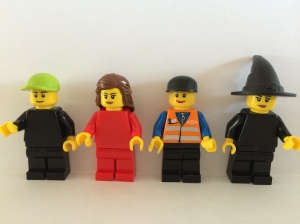Schedules can be a really effective way of increasing the ability of students to stay on task,whilst decreasing negative behaviours caused by anxiety. A schedule can be as simple or complex as you want to make it. The simplest way to create a schedule is simply to write a list of the activities that are going to happen in your class on your whiteboard. Students entering the room will immediately know your expectations and therefore settle down to their initial activity more quickly. Individual schedules can also be useful, especially if you want different groups to carry out different activities. If you haven’t had time to jot down what’s happening that lesson and you’re lucky enough to have an LSA in your classroom why not ask them to jot down a quick list for you whilst you explain the activities to the rest of the class?
Students with ASD can find it difficult to talk about their emotions; a five point scale can help them to do this. Students can move an arrow up and down the scale to indicate how they are feeling about what is happening in the classroom. Even better, these aren’t just useful for students with ASD; putting them on all the desks in your classroom will help you to gauge who can carry on working but may need help soon, and who needs help urgently. They increase the time all students spend on task, help you to prioritise your time more effectively and prevent students from becoming unneccesarily distressed.
- One means a student is calm and can work independently
- Two means a student can carry on for now but may need a little bit of help to get them on track soon
- Three means a student is feeling quite anxious about the task – now is the time to intervene in order to ensure the rest of the lesson runs smoothly
- Four means a meltdown is imminent, the student is likely to need some time out as quickly as possible.
- Five means a student has lost control
Scales can also be used to talk to students after a meltdown, in order to talk about how they felt and how they are feeling now. If you have an LSA in your room, these are a great way of deciding when a student feels able to work independently, allowing the LSA to fade into the background in order to promote independence, and when they need their support close by to provide emotional reassurance.
For more information about how 5 point scales can be used check out www.5pointscale.com
Desktop Zones of Regulation Cards
Zones of Regulation can be a helpful way of teaching students with ASD about emotions and how to group those emotions. Our KS3 syllabus includes discrete emotional regulation lessons for students, and Zones of Regulation is one of the methods we use to help students to understand their own emotions. This website explains the system http://www.zonesofregulation.com and is well worth a look. These mini desktop cards, exhibiting the Zones, can be used alongside a moveable arrow to gauge the amount of support a student is likely to need.
Group work can often be a source of great anxiety for students with ASD as they often struggle to understand what is expected of them and what to say. These group work prompt cards can help alleviate some of that anxiety for them. Giving a card to each student within the group or putting one large card out for the group to share will avoid signalling the student out whilst still providing the needed support.
Making friends can be difficult for students with ASD, especially those in mainstream settings where it’s difficult to understand the complex social rules that other teenagers take for granted. This check list can help students to identify those topics that it’s good to talk about, and those topics that are not appropriate for casual conversations.
Many students with ASD find theory of mind a challenge. They can find it difficult to understand that people think differently to them and that their friends may like different things. We use this social story and writing exercise to help our students explore the fact that it’s ok for our friends to have different ideas.
Student Friendly Pupil Profile Sheet
Finding out about the interests of your students is crucial to success. These pupil profile sheets will enable you to find out more about your students; what they enjoy, what they find difficult and what they feel will help them to cope better. Either print them out or put them on to students memory sticks and allow them to complete them electronically. A really easy way to get to know your students quickly.
Students with ASD often struggle to ask for help, if you have a student who finds it difficult to accept help either from their teacher or LSA, this Social Story may be of use to you.
Help cards can enable students to ask for help in an appropriate way, I print mine on yellow paper or card to remind students to use them when they’re getting to point three of the five point scale.
Positive reinforcement can help enable some students with ASD to cope better with the demands of the school day. We use a reward chart as part of our strategy for encouraging students to complete extended written tasks; which many of our students find difficult. Our class theme is Harry Potter, so we use our ‘Galleon Charts’ to collect Galleons to spend in Diagon Alley. Students receive one Galleon (sticker) for each piece of work completed, and we have rewards ranging from two to one hundred Galleons in our ‘shop’. The attached chart is basic so you can personalise it according to the interests of your students.
